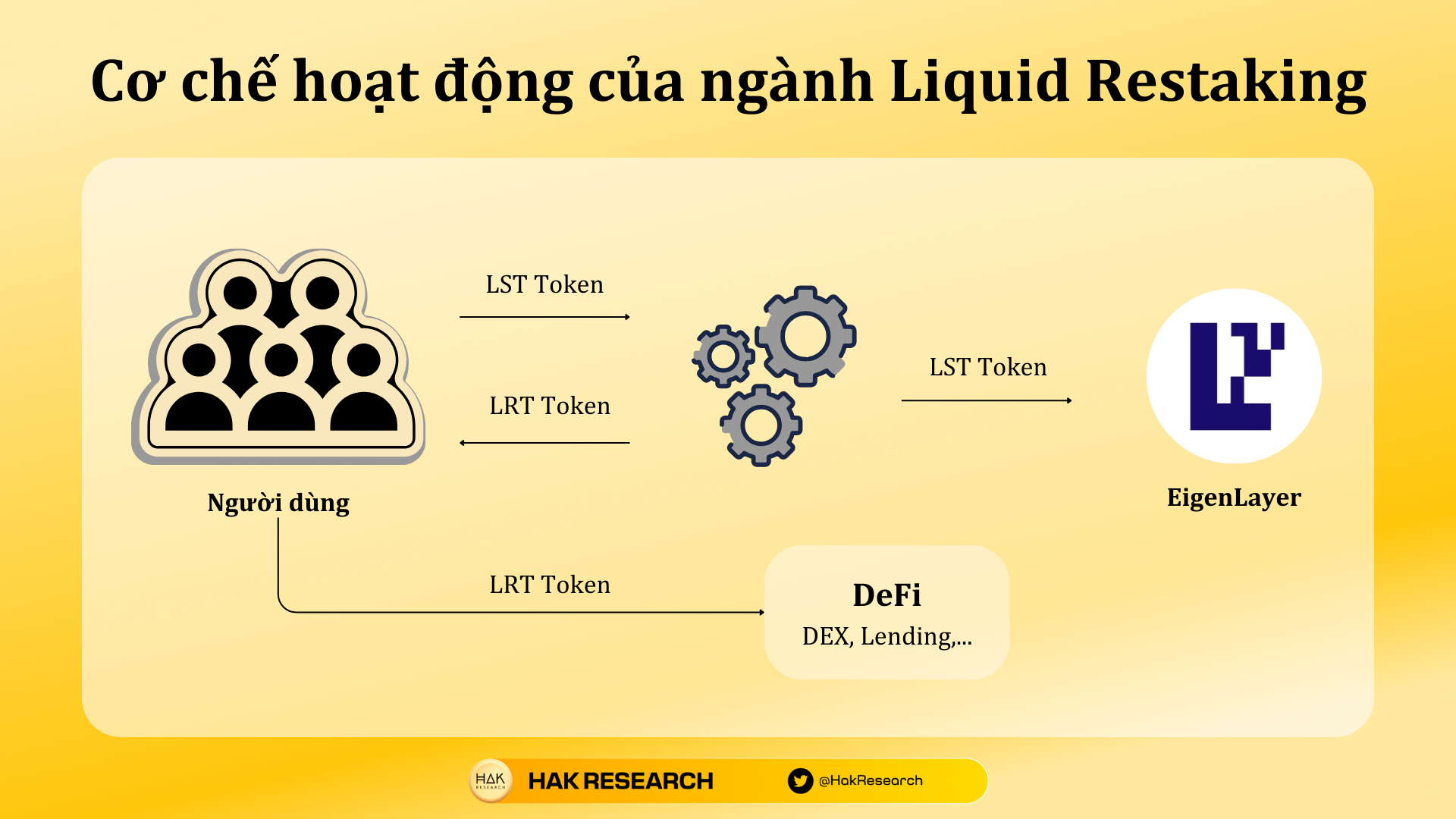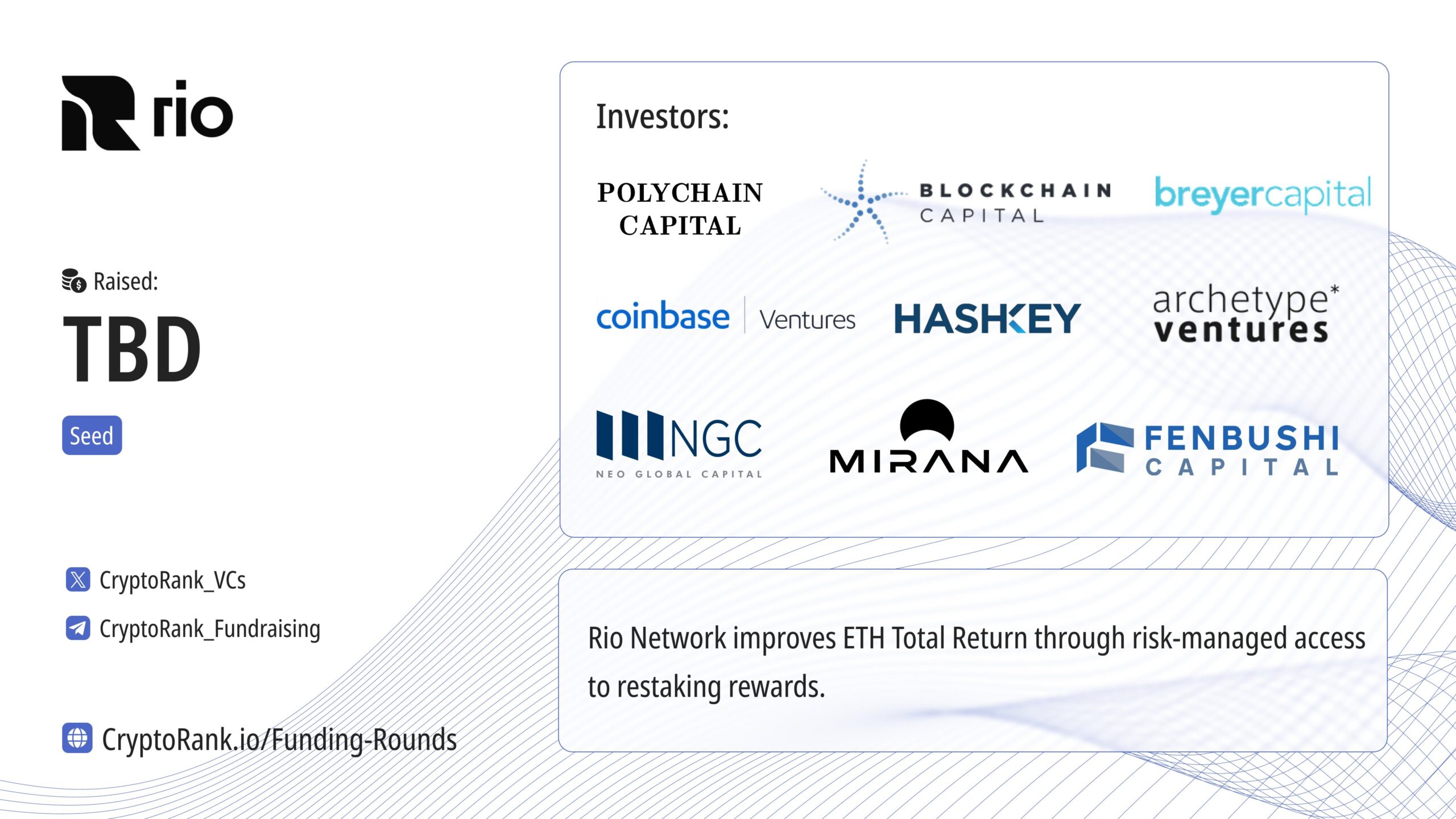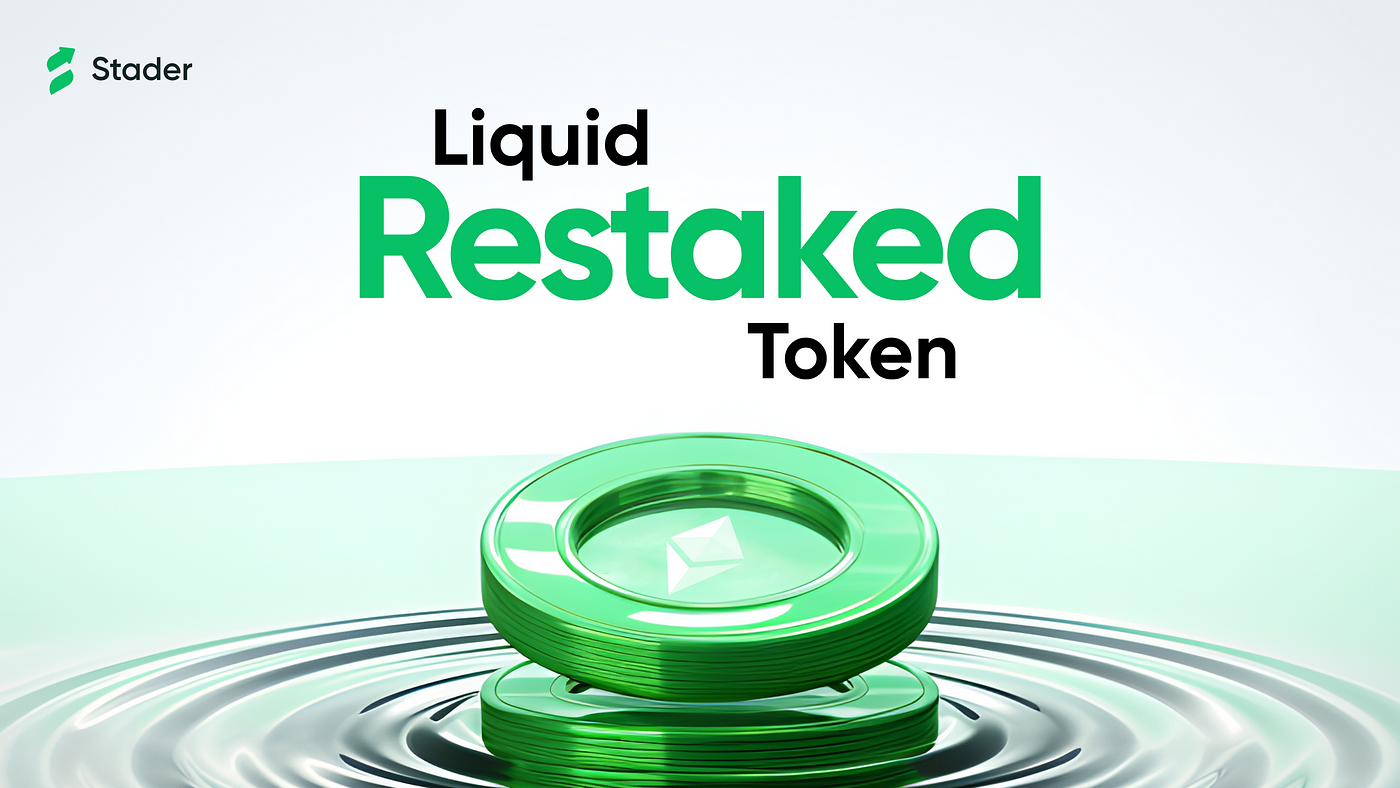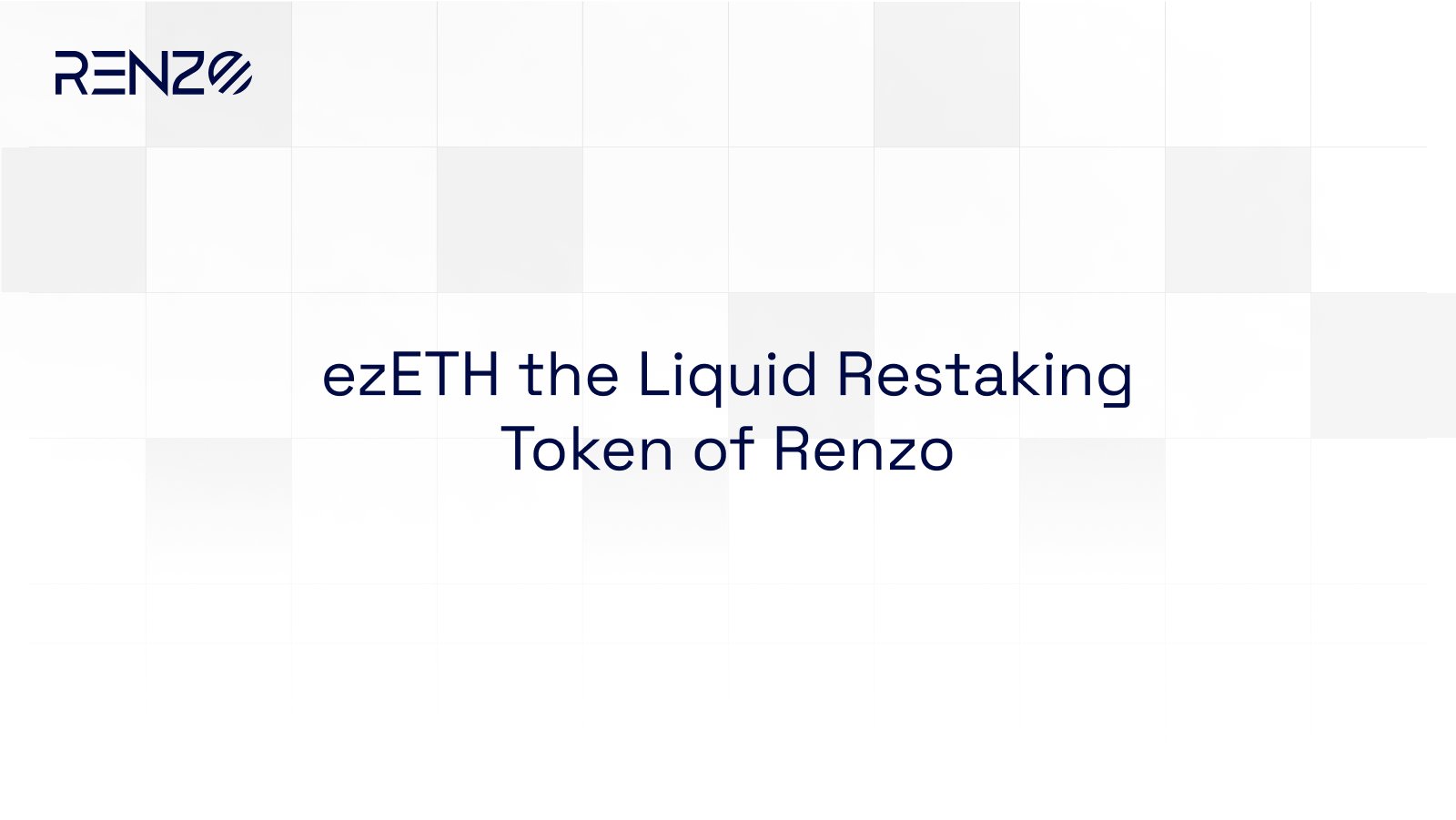What is Liquid Restaking? Liquid Restaking is an ecosystem of projects created to solve outstanding problems of good Restaking EigenLayer. The number of projects in the Liquid Restaking segment is exploding over time. So what is Liquid Restaking and what’s special about it? Let’s find out together in the article below.
Overview of Liquid Restaking
What is Restaking?
Restaking is a concept introduced by EigenLayer to refer to the act of staking LST Tokens that users receive when depositing ETH into LSD platforms such as Lido Finance, Rocket Pool, Coinbase, Frax Finance, Stader Labs,… Because users have to stake twice, it is called Restaking.
EigenLayer has truly brought a breath of fresh air to the DeFi market in general and the LSD industry in particular. However, EigenLayer’s Restaking still has some problems. One of the major problems for users is their liquidity: LST Tokens are locked in the protocol and cannot be further used to generate more profits. That’s why Liquid Restaking was born?
What is Liquid Restaking?
Liquid Restaking is a solution to free up liquidity for those who regularly use Restaking to optimize their profits. Instead of sending LST Tokens directly into the Restaking protocol, users can send them through a third project and receive Liquid Restaking Tokens (LRT), thereby participating in DeFi to optimize profits.
It can be seen that if Liquid Staking projects were born to unlock liquidity for ETH on Beacon Chain, then Liquid Restaking was born to unlock liquidity for Restaking protocols, the largest and only one currently being EigenLayer.
Liquid Restaking mechanism of action

Liquid Restaking mechanism of action
The operating mechanism of projects in the Liquid Restaking industry includes a number of basic steps as follows:
- Step 1: Users will deposit their ETH or LST Token into the Liquid Restaking protocol.
- Step 2: Liquid Restaking protocol will deposit its ETH or LST Token into EigenLayer to earn profits.
- Step 3: The Liquid Restaking protocol will send back the user LRT Token – representing the user’s assets in the protocol.
By holding LRT Token, users receive profits from staking ETH on LSD platforms and profits from the activities of Validators on the EigenLayer network. Besides, users can use LRT Token in the DeFi market with many different activities to earn more profits. From there, Liquid Restaking protocols bring 3 sources of profit to its users.
Benefits of Liquid Restaking
Some of the benefits that Liquid Restaking protocols bring to DeFi users include:
- Unlocking liquidity helps users be flexible in their positions, easily taking action before BlackSwan events in the Crypto market.
- Users can use leverage to optimize their profits many times in a relatively safe way when using LRT Token to borrow ETH and then put ETH or LST Token back into the Liquid Restaking protocol once. again. Iterate to optimize profits.
- Liquid Restaking protocols are also making the DeFi picture more colorful, thereby improving liquidity and use cases for the DeFi market.
Some disadvantages of Liquid Restaking
Besides the great advantages that Liquid Restaking protocols bring, it also has many potential risks that users need to know before participating, including:
- With the creation of so many “versions” of ETH, liquidity fragmentation is inevitable. When liquidity is low, these assets can easily depeg and endanger DeFi protocols in the market such as DEX, Lending & Borrowing, Yield Farming,…
- The fact that there are so many protocols and assets that can be migrated to Layer 2 platforms makes security issues always on alert.
TOP 3 Outstanding Projects in the Liquid Restaking Industry
Rio Network – Potential project backed by Polychain Capital

Rio Network is a Liquid Restaking platform with LRT Token as reETH. reETH is pegged to ETH at a 1 to 1 ratio. Rio Network allows users to deposit assets into protocols such as ETH, rETH – Rocket Pool, stETH – Lido Finance and cbETH – Coinbase Staked ETH to receive reETH. reETH can earn additional profits for users in the DeFi market such as providing liquidity, borrowing – lending,…
Rio Network has many partners who are Node Operators such as Chorus One, HashQuark, Unit 410, Figment and Kiln. These will be Node deployment partners on the Ethereum network and select authentication services (AVS) on EigenLayer.
Currently, Rio Network has called on successful Seed rounds such as Coinbase Ventures, Hashkey Capital, NGC Ventures, HackVC, Fenbushi Capital, Polychain, Robot Ventures,… and a series of KOLs in the market. Crypto.
Kelp DAO – A product of Stader Labs

Kelp DAO is a Liquid Restaking platform with LRT Token as rsETH. Kelp DAO allows users to stake assets such as rETH – Rocket Pool, stETH – Lido Finance and cbETH – Coinbase Staked ETH and ETHx – Stader Ethereum and then receive rsETH at a ratio of 1 – 1.
Rio Network was born to solve the problems of Restaking relatively thoroughly with DAO such as:
- The DAO will decide which EigenLayer services Node Operators will operate in to optimize profits. People will see differently with Rio Network where their professional partners are self-selected.
- Completely solve the problem of gas fees and rewards because there are many services that lead to many different rewards, which in turn costs a lot to claim.
Kelp DAO was built and developed by Stader Labs – a project with ETHx (LSD) with hundreds of millions of dollars in TVL and successful calls from many different investment funds.
Renzo Protocol – Emerging project in the Liquid Restaking industry

Renzo Protocol is a Liquid Restaking platform built and developed on EigenLayer. Renzo Protocol was built to help users both earn profits from staking ETH on Beacon Chain and receive EigenLayer rewards when participating in Retake without being locked in liquidity in this protocol. An interesting point is that when users stake on Renzo Protocol, they will receive Eigen Points on EigenLayer.
Renzo Protocol accepts many different types of assets such as stETH, rETH, cbETH, ETH into Renzo and mints ezETH and ezETH is a Reward-bearing Token. Renzo makes profits by taking fees based on Restaking rewards. Half of the fee will be sent to the project’s Treasury, the other half will pay the Node Operators.
Summary
The Liquid Restaking industry is considered one of the industries with explosive potential in the future. Hopefully through this article, everyone can understand more about what Liquid Restaking is?


